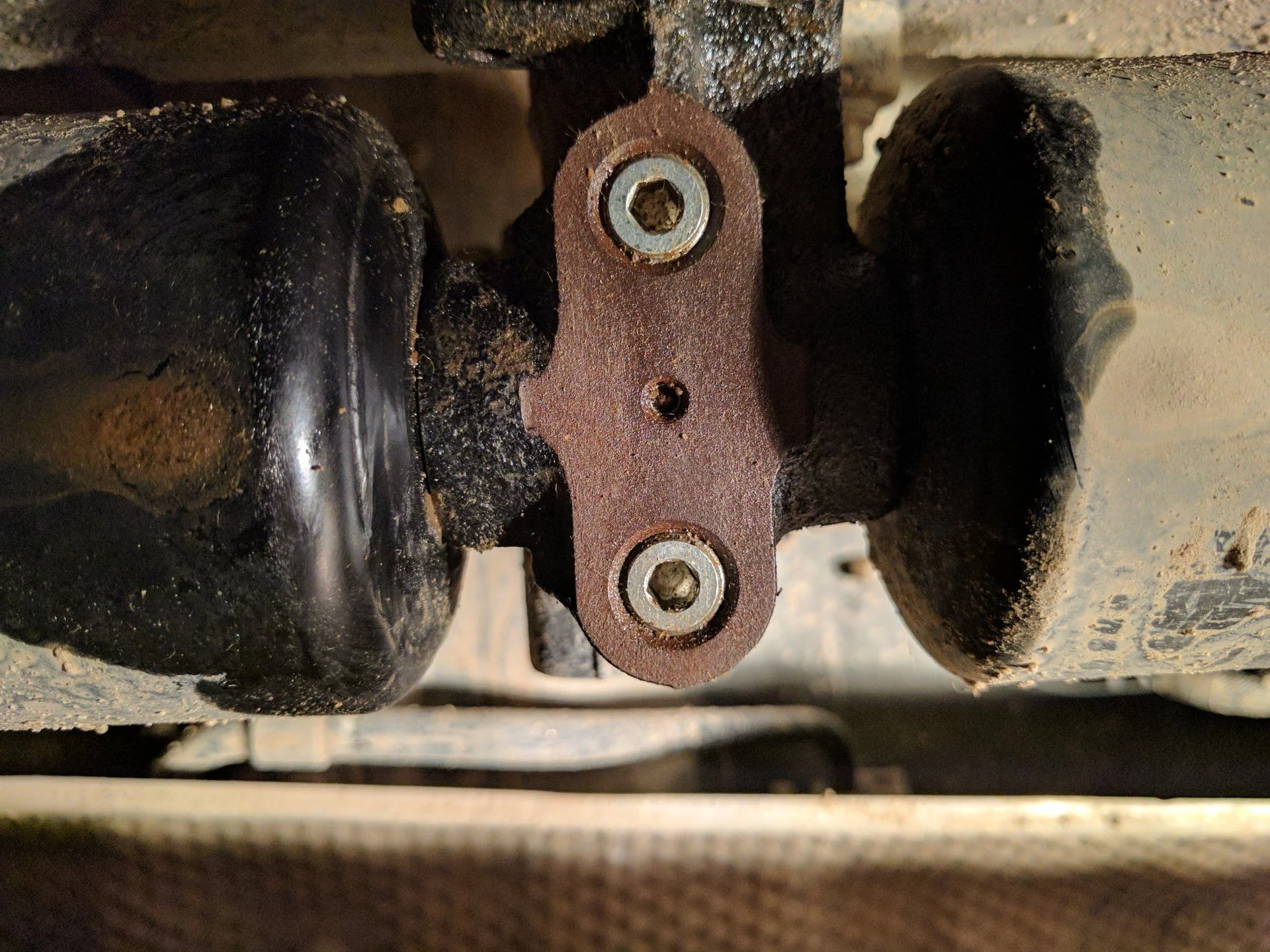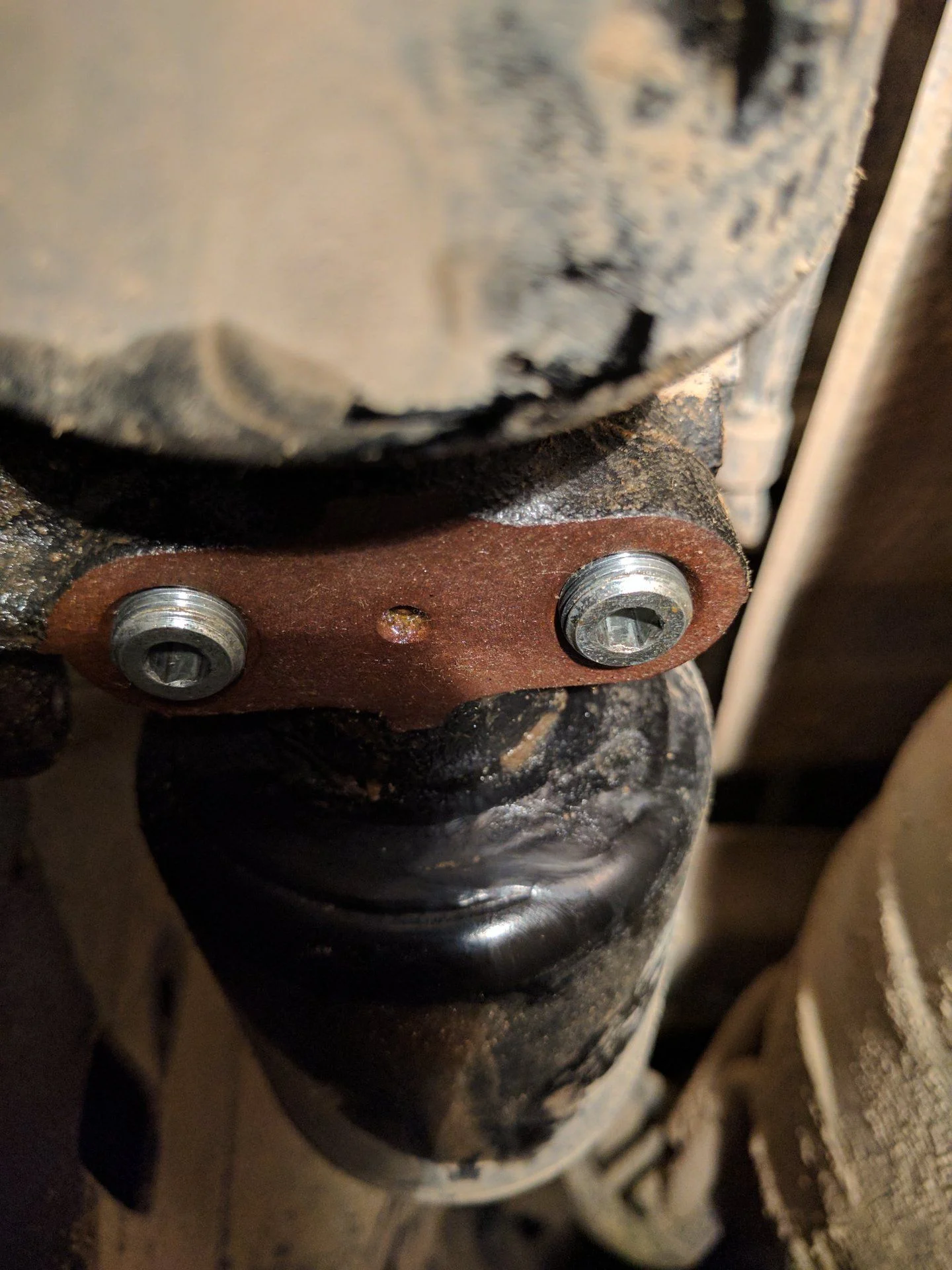Yes, this is what most of us have done. Some go as far as then trying to seal it over w/ plasti-dip or really thick layer of grease. But yes... it's a good idea to do this now, and probably every time you change your oil, etc...I empathize with the OP's dilemma, many of us weekend wrenchers have been there. My question goes to those of us who have KDSS valves that have not reached this point. I have no familiarity with these valves or systems, however as stated in an earlier post, removing the plugs completely will lead to depressurization of the system. However, would it be wise to do some inspection and perhaps preventive maintenance to avoid this unfortunate situation in the first place. For example, could one back out the plugs a little of non compromised valves and apply an anti-seize compound to the threads? I'm just trying to figure out if this is wise preventive maintenance.
Navigation
Install the app
How to install the app on iOS
Follow along with the video below to see how to install our site as a web app on your home screen.
Note: This feature may not be available in some browsers.
More options
Style variation
You are using an out of date browser. It may not display this or other websites correctly.
You should upgrade or use an alternative browser.
You should upgrade or use an alternative browser.
This site may earn a commission from merchant affiliate
links, including eBay, Amazon, Skimlinks, and others.
More options
Who Replied?MScruiser
obsessive-compulsive oppositional-defiant wise-ass
I'd use a center punch on the broken bolt, then start drilling it out with a very very sharp and high quality metal cutting drill bit. Since the hex is 5mm, I'd start with something much smaller, and slowly step up bit sizes until the hex is paper-thin and you can remove it with a metal screw (yanked out by a pair of pliers).
As far as getting the bolt loose, kroil is a good idea. Use some heat too, but not too much, as you could potentially damage seals inside of the valve. Oh, and invest in a very high quality hex key. I'd look into Proto.
I think it took me 3 days to get mine open, so I know what I'm talking about.
As far as getting the bolt loose, kroil is a good idea. Use some heat too, but not too much, as you could potentially damage seals inside of the valve. Oh, and invest in a very high quality hex key. I'd look into Proto.
I think it took me 3 days to get mine open, so I know what I'm talking about.
Last edited:
Yes, this is what most of us have done. Some go as far as then trying to seal it over w/ plasti-dip or really thick layer of grease. But yes... it's a good idea to do this now, and probably every time you change your oil, etc...
Anti-seize compound is great stuff. I put a thin coat of it between my Rock Warriors and the wheel hub and zero corrosion so far, whereas the mating surface on my old RSX wheels on my ES corroded in no time from the contact of dissimilar metals.
- Thread starter
- #25
1. My intent was not to bash Slee. They have a great reputation.
2. After scrubbing with wire brush and coating the seized bolt with PB Power Blaster, it unscrewed fairly easily. That felt good!
3. Tomorrow I'll work on removing the broken hex bit and am hopeful that the second bolt will also come free.
Thanks to all of you for your words of wisdom. Wish me luck tomorrow. I'll post pictures.
2. After scrubbing with wire brush and coating the seized bolt with PB Power Blaster, it unscrewed fairly easily. That felt good!
3. Tomorrow I'll work on removing the broken hex bit and am hopeful that the second bolt will also come free.
Thanks to all of you for your words of wisdom. Wish me luck tomorrow. I'll post pictures.

The rusted KDSS valve sounds like a problem that Toyota created.
Can someone post a pic of their KDSS valve?
Edit: just saw OP pic. It didn't load at first for some reason.
Yup, it seems like any state where corrosion might possibly happen will cause this. It's bizarre. Here's my '13 from 97k of Kansas City driving. I'd consider this above average (in a good way). Some guys on here have KDSS valves that look like they were pulled from the bottom of the ocean.
2013 85k California truck. Pics are from the first time I cracked them open, and before anti-seize and lube. And the only reason I opened them was... cause I "needed to know". Driver side.
KDSS Valves 2013 Land Cruiser @85k miles
KDSS Valves 2013 Land Cruiser @85k miles. SoCal car.
KDSS Valves 2013 Land Cruiser @85k
No problem opening, 3 turns counter clockwise. Spread anti-seize over exposed threads before...
Is that under the motor? Driver side or passenger side?
On the driver's side, just under the body a bit past your running boards/sliders. Sort of 3/4ths of the way back. You'll see an area covered by a metal cover, just look up from underneath and you'll see the valves.
Markuson
SILVER Star
Many reminders in the past...but if anyone reading along here has not already done so...go out and clean...the dry your KDSS valves...then slather the valve with some THICK grease. I have marine grease on mine, and it has stayed on for a good long time.
Toyota really screwed the pops how on this one...making something that is VERY expensive to replace so prone to destructive rust...so it's worth being proactive.
Doooo it!
Toyota really screwed the pops how on this one...making something that is VERY expensive to replace so prone to destructive rust...so it's worth being proactive.
Doooo it!
To be fair, Toyota didn't design it to need any servicing either 
We've had some stubborn ones, with time we've been able to get them to move but it can take repeated assaults with penetrating oil, impact drivers, etc.
It's only a matter of time until we run into a completely fused one. I wonder who makes the valve for Toyota and if they'll offer spares?
We've had some stubborn ones, with time we've been able to get them to move but it can take repeated assaults with penetrating oil, impact drivers, etc.
It's only a matter of time until we run into a completely fused one. I wonder who makes the valve for Toyota and if they'll offer spares?
Markuson
SILVER Star
To be fair, Toyota didn't design it to need any servicing either
We've had some stubborn ones, with time we've been able to get them to move but it can take repeated assaults with penetrating oil, impact drivers, etc.
It's only a matter of time until we run into a completely fused one. I wonder who makes the valve for Toyota and if they'll offer spares?
I'm not knocking KDSS. I frankly think it's a *genius* system the way it passively works. But it seems like a weird oversight to make such an important means of common adjustment so incredibly susceptible. Even our key fobs have a sealed cover that keeps internals dry...
Thank you all for the information! I will check mine too.
Several threads on the frozen KDSS valves, now another. This one got me thinking with work on the 200 planned this next week I better check and see if mine move. About 2 years ago the rear KDSS actuator (might not be correct description) was leaking and it was replaced under warranty. So I was assuming that they have been loosened previously, and to my delight they broke free. Getting the 3 bolts out that hold on the cover was more difficult.
Related to the OP's post mine looked to have about the same amount of rust. Sorry to hear of your troubles.
Related to the OP's post mine looked to have about the same amount of rust. Sorry to hear of your troubles.
- Thread starter
- #37
1. My intent was not to bash Slee. They have a great reputation.
2. After scrubbing with wire brush and coating the seized bolt with PB Power Blaster, it unscrewed fairly easily. That felt good!
3. Tomorrow I'll work on removing the broken hex bit and am hopeful that the second bolt will also come free.
Thanks to all of you for your words of wisdom. Wish me luck tomorrow. I'll post pictures.
I tried several different bits (including a reverse thread extraction type) with a standard drill, hammer drill and Dremel tool. Due to the hardness of the medal, my inability to get sufficient leverage and a desire not to screw up the softer steel of the hex bolt, I was unable to drill into the snapped-off hex bit. The broken hex bit is slightly countersunk in the KDSS bolt, thus slotting the broken bit with a Dremel would have damaged the KDSS bolt.
The guy at Slee told me that if I was able to loosen the ‘other’ KDSS bolt, which I was, then they would remove the hex bit that Slee snapped off. So, I’ll set up an appointment for next week. Oh well—stuff happens. The good news is that a positive outcome is very likely.
- Joined
- Jun 6, 2005
- Threads
- 74
- Messages
- 1,392
- Location
- Jacksonville Beach, Florida
- Website
- exitoffroad.com
I wonder if Toyota had a different supplier do the KDSS valves for the 4Runner? Here's a shot of mine (2014 4runner), and looks to be all aluminum or some alloy with exposed bolts as opposed to counter-sunk allen head screws. The 200 series is cast metal I guess?
I've dealt with junked out large allen heads in rear differentials before (scraped so bad against rocks that you can't get into the allen anymore), and my only option with those was to notch it in one corner and chisel it out, rotating it as it goes. It worked several times, and I was able to put in a new screw/bolt (whatever you'd call it), but those were large in comparison to this 5mm size, and not a pressurized system, so I'm not sure what would be an ideal way to remove the stuck KDSS screws.
Also, my bet is that it won't be long before someone will need to offer an aftermarket replacement valve setup, since these trucks are only 10 years old tops and already giving hell to some people.

I've dealt with junked out large allen heads in rear differentials before (scraped so bad against rocks that you can't get into the allen anymore), and my only option with those was to notch it in one corner and chisel it out, rotating it as it goes. It worked several times, and I was able to put in a new screw/bolt (whatever you'd call it), but those were large in comparison to this 5mm size, and not a pressurized system, so I'm not sure what would be an ideal way to remove the stuck KDSS screws.
Also, my bet is that it won't be long before someone will need to offer an aftermarket replacement valve setup, since these trucks are only 10 years old tops and already giving hell to some people.
Interesting. I wonder if your 4runner KDSS is a new generation of system? Cause I've definitely read about corrosion on earlier 4runner KDSS valves. To the extent that some suspected that Toyota didn't even offer, or would not fit KDSS to 4runners sold to certain regions that were known to use a lot of salt on the roads.
Similar threads
Users who are viewing this thread
Total: 1 (members: 0, guests: 1)


